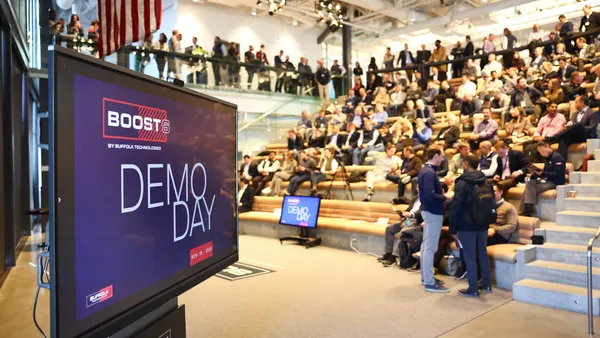Autodesk last week reported earnings following the Jan. 31 close of its fiscal year, and the results demonstrated not only the company’s ambitions but also that construction companies seem increasingly willing to go digital.
President and CEO Andrew Anagnost reported that the company hit several quarterly and full-year milestones and records. For one, quarterly billings topped $1 billion for the first time, having jumped 39% from the same period a year before. For the full year, total revenue climbed 25% over the prior year's to almost $2.6 billion, its highest ever.
Recurring revenue — from traditional maintenance plans and the company’s core subscription plans — made up 95% of total revenue, but the number of subscription plans has now overtaken the number of maintenance plans.
Subscription plans for signature Autodesk products like Revit, BIM 360, Navisworks and AutoCAD include enterprise business agreements (EBAs), cloud-based offerings and term-based product subscriptions.
Maintenance plans include upgrades and technical support for perpetual license software and now make up less than 20% of Autodesk's revenue. This is noteworthy because it represents a successful shift to the subscription-based model, the only way new customers have been able to pay for Autodesk software since August 2016.
The new model brings "cash flow-generating power," with $300 million of cash flow at the end of the year, according to Chief Financial Officer Scott Herren.
In the fourth quarter alone, Herren said, Autodesk grew subscriptions by 13% for a tally of $4.2 million, and converted 110,000 maintenance plan customers to subscriptions for a total of 800,000 conversions since its shift to the new model. The company also added 51,000 cloud subscribers, an increase driven by BIM 360 solutions.
In addition to the company’s investments in digitization, aimed at helping to usher the industry through a shift in that direction, Anagnost said Autodesk's commitment to growing its construction business was seen in this year’s acquisitions. Autodesk announced in November that it had agreed to purchase PanGrid for $875 million, moving the firm into the real-time management of blueprints and other field construction documents. The company also acquired Assemble Systems this past year, a strategy that Anagnost said would beef up its preconstruction capacity. The purchase of BuildingConnected in a $275 million deal, he said, would help with bidding and risk management offerings.
Anagnost said customer reaction to the acquisitions has been “overwhelmingly positive,” especially from those who were already using products from these newly acquired companies.
Opportunities buoyed by increased demand
Anagnost said there are opportunities for growing Autodesk's subscription base in 2020 and beyond, as evidenced in part by the increase in demand for those skilled in Autodesk products. Revit and AutoCAD, he said, are consistently listed among the top 15 skills for both freelancers and those looking for full-time positions in construction-related fields.
Also expected to contribute to future growth for the company is the uptick in the adoption of building information modeling and mandates for its use in the infrastructure space. He said the fourth quarter saw the company enter into a seven-figure enterprise agreement with an unnamed European infrastructure provider in response to a BIM mandate, for example.
Competitor software PlanGrid has also become popular with public agencies for its document management capabilities. The Tennessee DOT, for example, is requiring all prime contractors awarded contracts beginning this month to use PlanGrid.
"We are entering fiscal 2020 with strong momentum in every geographic region and across all product categories," Anagnost said. "This sets us up well to achieve our target of $1.3 billion of free cash flow this year." He added that the company expects to see acceleration in its construction business in 2019 and the coming years.













